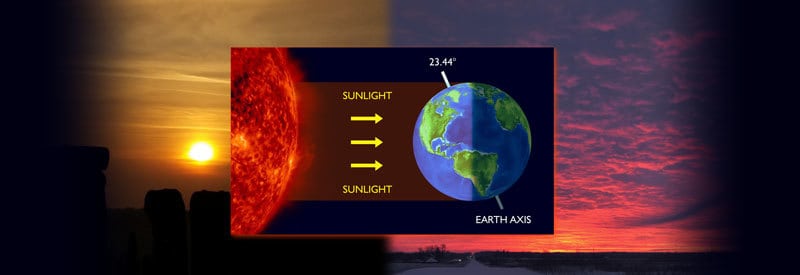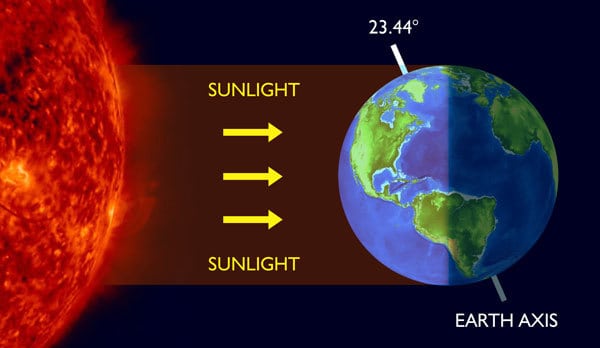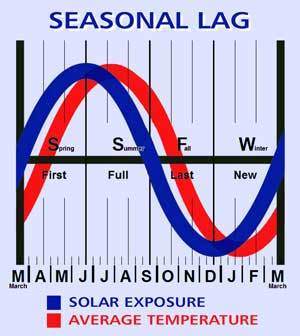The Longest And Shortest Days Of The Year: When They Occur And Why They Are Not The Coldest Or Hottest Days As Well

Many readers will be familiar with the terms "summer and winter solstice." They primarily refer to the longest and shortest day of a calendar year, occurring at approximately the same time each year.
The longest day of the year is 21 June in the Northern Hemisphere and around 21 December in the Southern Hemisphere. The shortest day of the year occurs around 21 December in the Northern Hemisphere and 21 June in the Southern Hemisphere. They are known as the summer & winter solstice, respectively.
During two specific days of the year (and the days leading up to them), you will become aware of the terms "summer and winter solstice" frequently mentioned by people from all walks of life, and even see it covered extensively on television and read about it online.
These terms are also synonymous with the longest and shortest days of the year and when they occur in the Northern and Southern Hemisphere.
What is important from a weather perspective is the significance of these days as they relate to the changes in weather, as well as seasonality. This will also be the main focus of this article.
Before we can start to examine this relationship, we first need to define what exactly the summer and winter solstice is.
What Is The Summer And Winter Solstice?

The summer solstice occurs on the longest day of the year, on 21 June in the Northern Hemisphere and around 21 December in the Southern Hemisphere. It is also commonly referred to as midsummer, the day the sun reaches its highest point in the sky.
The winter solstice occurs on the shortest day of the year, usually around 21 December in the Northern Hemisphere and on 21 June in the Southern Hemisphere. It is also known as midwinter, the day the sun reaches its lowest point in the sky.
This is a very cryptic description of the complete process and what it implies, but it is the best explanation to make it quick and easy to understand.
What Causes The Summer And Winter Solstice?
Most of you will know that the Earth is tilted on its axes. The direction in which it leans, as well as its rotation around the sun, is responsible for the summer and winter solstice.

Summer Solstice In The Northern Hemisphere
In The Northern Hemisphere, around 21 June, the earth is tilted on its axes at 23.44° with the North Pole pointed towards the sun. On this day, the Northern Hemisphere gets the maximum amount of sunlight, and the North Pole experiences a day of constant sunshine.
During the winter solstice around 21 December, the North Pole faces away from the sun tilted on its axes at 23.44°. On this day, the Northern Hemisphere gets the minimum amount of sunlight, and the North Pole experiences a day of constant darkness.
In the Southern Hemisphere, exactly the opposite happens on these same dates, with 21 June being the shortest and 21 December the longest day.
Why Is The Longest Day Of The Year Not The Hottest And The Shortest Day Not The Coldest?
Naturally and understandably, you would think that the longest day in the middle of summer will also be the hottest on average. After all, this sounds logical and makes sense. Yet, as many of you would have noticed yourselves, this is never the case.
But why isn't the longest day of the year in the middle of summer not the warmest on average? Similarly, why isn't the coldest day of the year in the middle of winter not the coldest on average?
In the Northern Hemisphere, if you go to a beach resort or visit high-lying areas during June, you will notice that the beach is not that warm and the ocean water is still cold. In nature, some high-lying areas, specifically mountaintops, may still be covered with snow.
Visit these same areas two months later during August, and you will experience the warmest temperatures of the year. On average, the beaches will be hot and ocean water pleasant, and in nature, high-lying areas will now also be pleasantly warm with clear mountain tops.
What you are experiencing is called seasonal lag. And it is the seasonal lag that is responsible for this phenomenon that causes the warmest temperature to occur around two months after the summer solstice each year.

Seasonal lag is the occurrence where the highest temperatures in a location occur some time after the period of maximum solar radiation. The same applies to the area where the lowest temperatures occur some time after the period of least solar radiation.
There is a simple explanation for the seasonal lag occurring every year, and it has everything to do with the different ways in which the various surface areas around the world warms up and cools down.
Although the air gets the maximum solar exposure during the summer solstice, the land and ocean water takes much longer to warm up (and cool down). Both land and sea get warmed, not only up to the summer solstice but for some period afterward.
Even though the amount of solar exposure is getting less after the summer solstice, the land and sea still receive solar radiation and keeps warming up. This is because the rate of heat absorption is still more than the amount of heat dissipating.
Temperatures continue to rise until the rate of heat absorption is no longer more than the rate of heat dissipating. At this point, you experience the year's maximum average temperatures, which are approximately two months after the summer solstice.
The same process occurs in reverse during the winter solstice. After this day which receives the least amount of sunlight, the land and ocean waters are still releasing heat into the atmosphere for some period. This is because they also cool down much slower than the air.
Even though the amount of solar exposure is getting more after the winter solstice, the land and sea are still radiation heat and keeps cooling down. This is because the rate of heat dissipation is still more than the amount of heat absorption.
Temperatures continue to fall until the rate of heat radiation from the land and ocean is no longer more than the rate of heat it absorbs. At this point, one experiences the year's lowest average temperatures, approximately a month or more after the summer solstice.
This phenomenon called seasonal lag clearly explains why the warmest and coldest days of the year occur some period after the summer and winter solstice, respectively. Once you understand seasonal lag, the whole process becomes much easier to understand.
Conclusion
You will now have a clear understanding of what the summer and winter solstice is and how they mirror each other in the Northern and Southern Hemisphere.
It should also explain that seasonal lag, due to the fact that the land and ocean take much longer to heat up and cool down, is responsible for the longest days not being the warmest, and the shortest days, not the coldest.
Never miss out again when another interesting and helpful article is released and stay updated, while also receiving helpful tips & information by simply clicking on this link .
Until next time, keep your eye on the weather!

